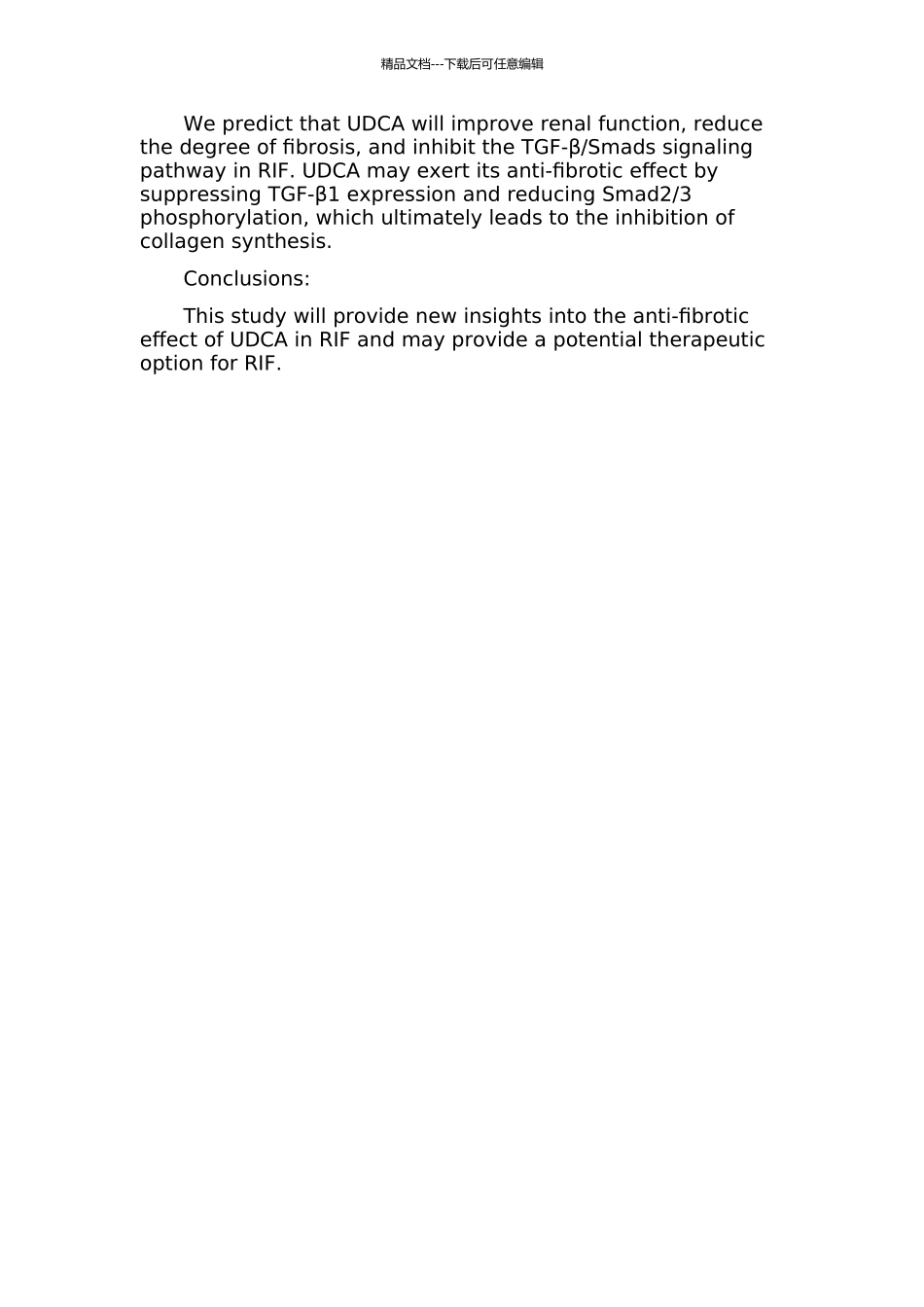精品文档---下载后可任意编辑乌司他丁对大鼠肾间质纤维化中 TGF-βSmads 信号转导通路的干预作用的开题报告Title: Intervention of Ursodeoxycholic acid on TGF-β/Smads Signaling Pathway in Renal Interstitial Fibrosis in RatsBackground and Significance:Renal interstitial fibrosis (RIF) is the final common pathway to end-stage renal disease with various etiologies. Transforming growth factor-β (TGF-β)/Smads signaling pathway plays a crucial role in the initiation and progression of RIF, which can activate fibroblasts to produce extracellular matrix and cause the deposition of collagen, leading to renal fibrosis. Ursodeoxycholic acid (UDCA), a natural bile acid, has shown protective effects in various liver and kidney diseases, including its anti-inflammatory and anti-fibrotic properties. However, it is still unclear whether UDCA can intervene in the TGF-β/Smads signaling pathway in RIF and provide a potential therapeutic option for RIF.Objectives:The objectives of this study are to investigate the effect of UDCA on TGF-β/Smads signaling pathway in RIF and to explore the underlying molecular mechanisms.Methods:Rats will be randomly divided into four groups: control group, model group, UDCA-L group (UDCA low dose) and UDCA-H group (UDCA high dose). The RIF model will be established by unilateral ureteral obstruction (UUO) surgery. The rats in UDCA-L and UDCA-H groups will be administrated with 20 mg/kg/day and 40 mg/kg/day of UDCA by gavage, respectively, for 14 days after UUO surgery. Renal function will be evaluated by serum creatinine and urea nitrogen levels. The degree of fibrosis will be analyzed by Masson’s trichrome staining and collagen content measurement. The expression of TGF-β/Smads signaling pathway-related proteins, including TGF-β1, Smad2/3, and collagen I and III, will be detected by Western blot and Immunohistochemistry.Expected Results:精品文档---下载后可任意编辑We predict that UDCA will improve renal function, reduce the degree of fibrosis, and inhibit the TGF-β/Smads signaling pathway in RIF. UDCA may exert its anti-fibrotic effect by suppressing TGF-β1 expression and reducing Smad2/3 phosphorylation, which ultimately leads to the inhibition of collagen synthesis.Conclusions:This study will provide new insights into the anti-fibrotic effect of UDCA in RIF and may provide a potential therapeutic option for RIF.

